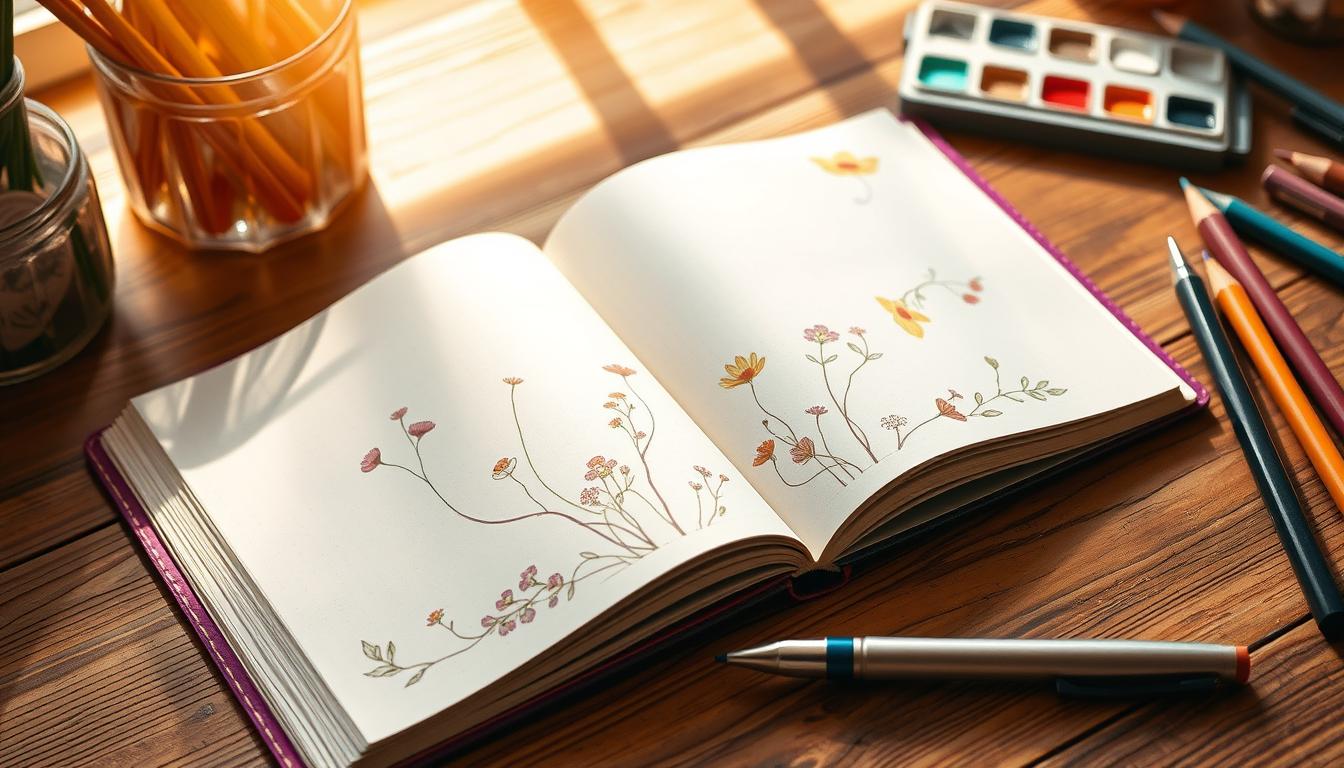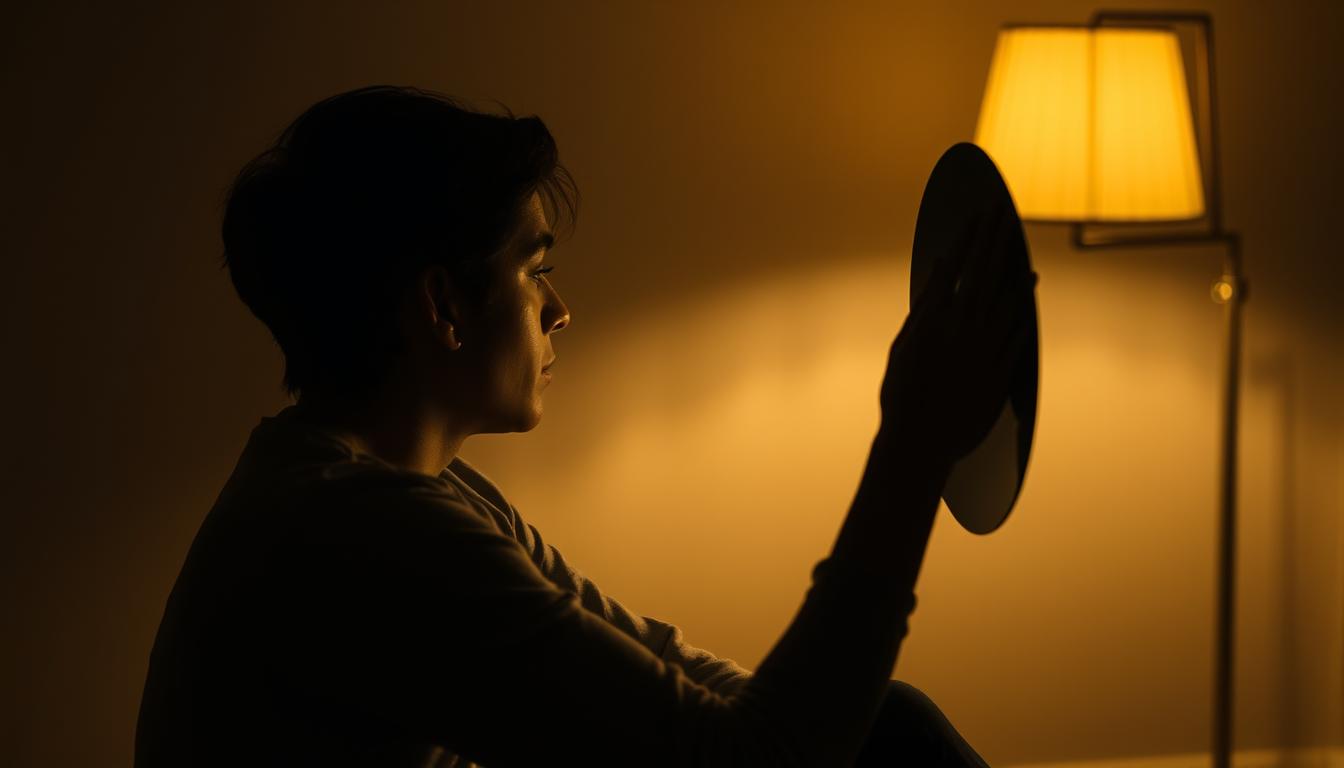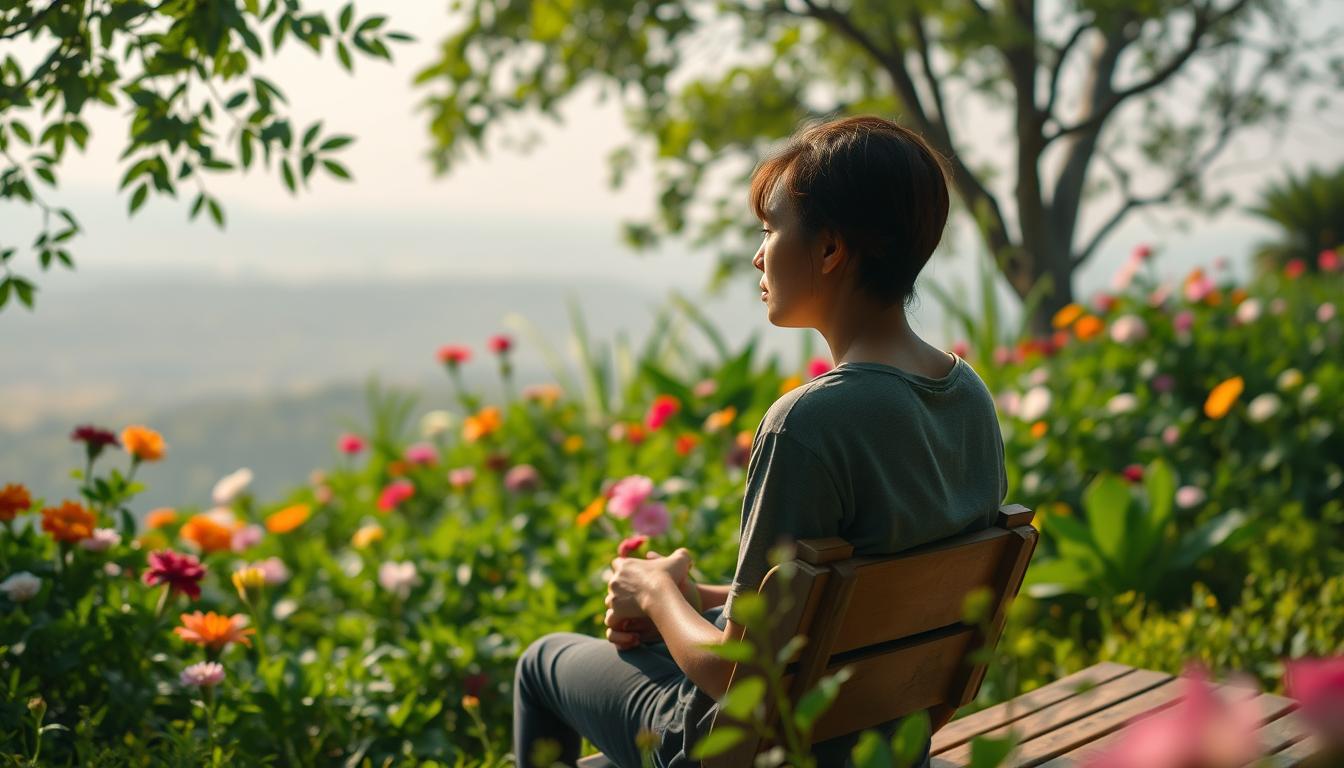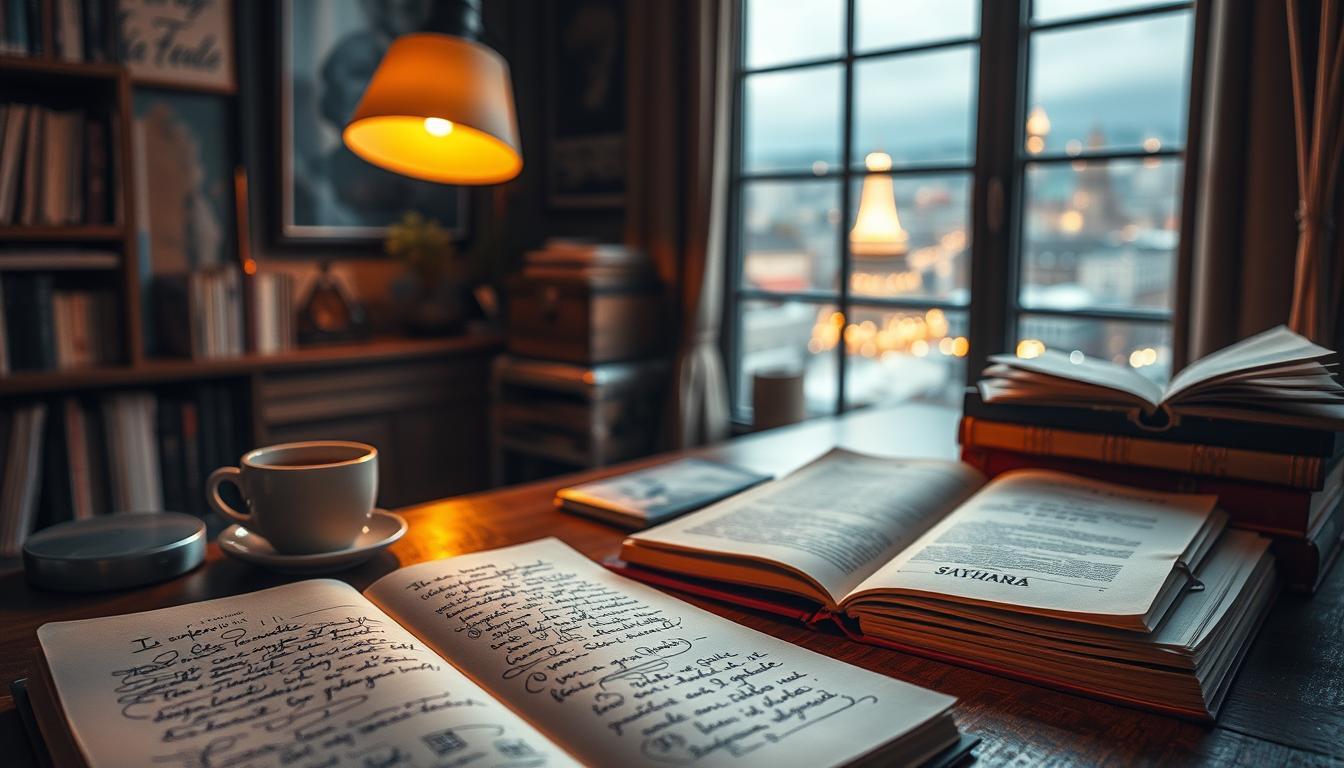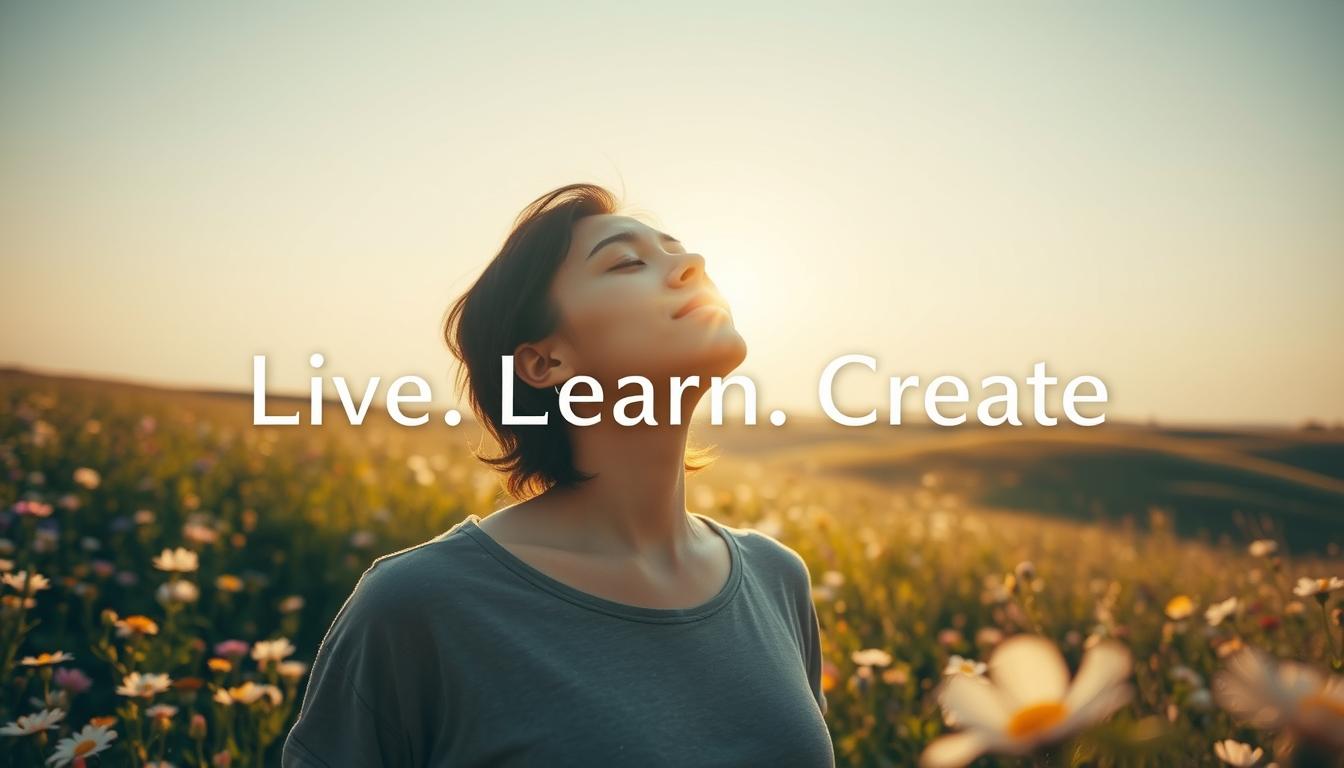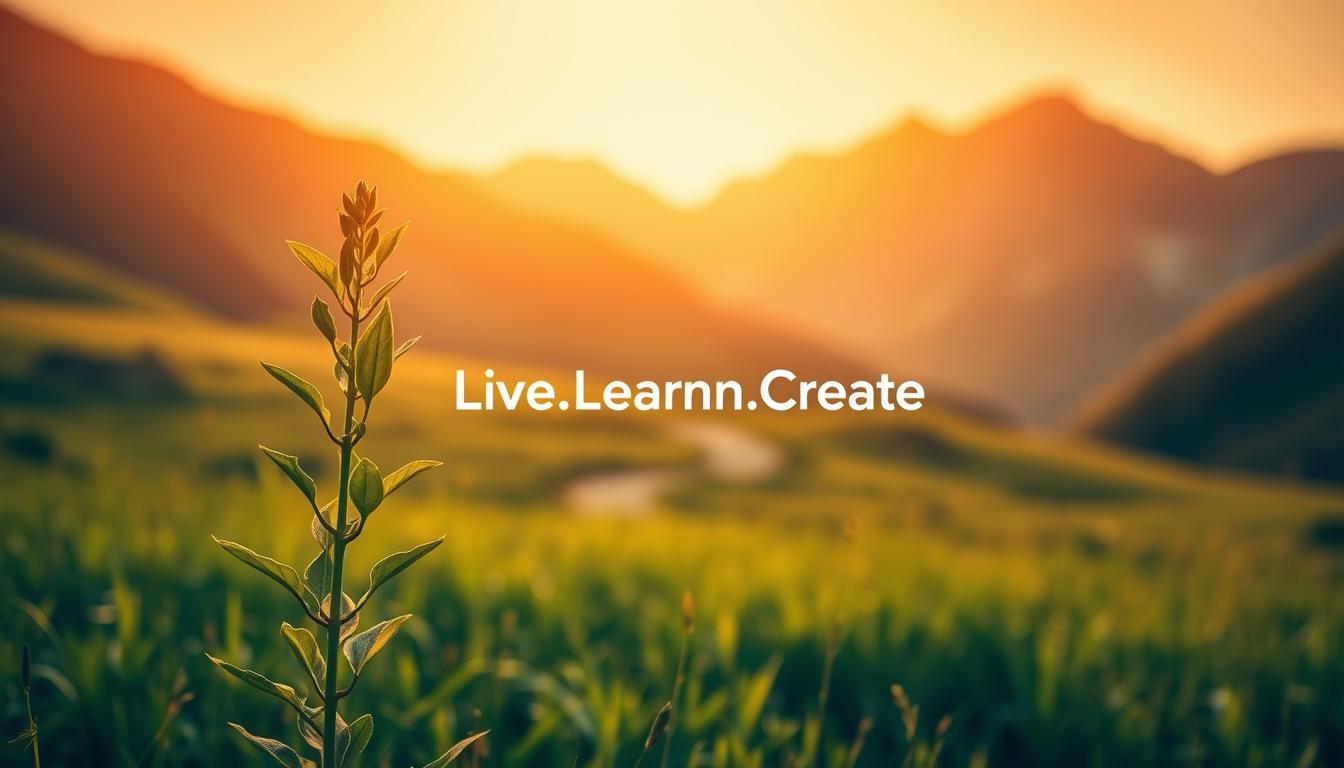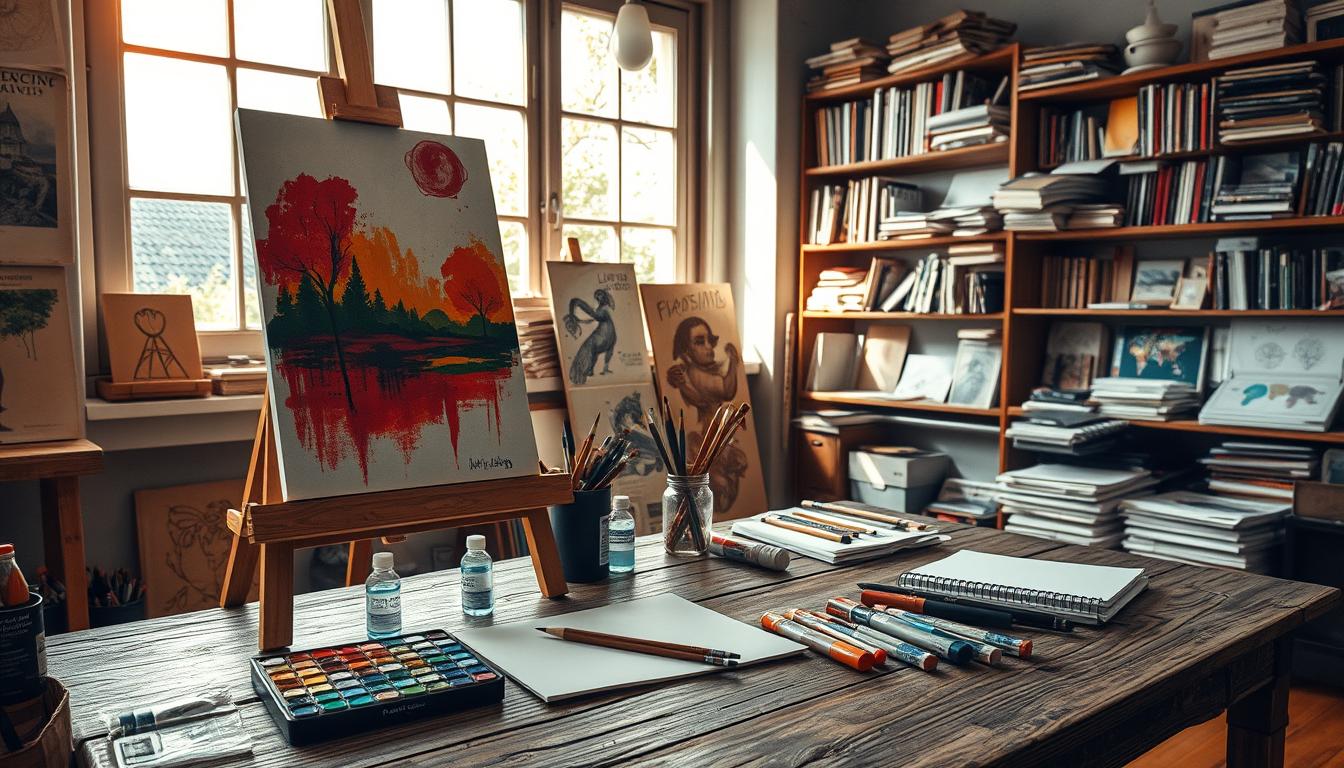Ever feel like your daily routine lacks spark? What if a simple notebook could unlock more joy, resilience, and self-discovery than you imagined? Creative journaling isn’t about perfect sketches or poetic prose—it’s a mindful guide to weaving small acts of everyday creativity into your life. By taking just a few moments each day to express your thoughts, feelings, and ideas on paper, you can transform the mundane into the extraordinary. This practice encourages you to explore your inner landscape, tapping into emotions and thoughts that might otherwise go unexamined. Each entry serves as a reflection of your journey, allowing you to track your growth and celebrate your unique perspective. The beauty of creative journaling lies in its flexibility; it can be as structured or as free-form as you desire, making it a personal and fulfilling experience.
Research shows that playful self-expression—like doodling, list-making, or collage—fuels problem-solving and emotional balance, acting as a catalyst for creativity in our daily lives. Think of it as Ruth Richards’ concept of “everyday creativity” in action: accessible, joy-sparking, and deeply human. Whether you’re jotting down dreams, sketching coffee cups, or even creating vision boards, each page becomes a stepping stone toward growth and self-discovery. Engaging in these activities allows you to unlock your imagination and explore new ideas, making the process not just enjoyable but also enriching.
Ready to start? Carmen Galloway’s resources (more in Section 6) offer trusted tools that can guide you through your creative journey. Remember, this practice thrives on consistency, not mastery. Your journal is a judgment-free zone—just experience the process, allowing yourself to embrace imperfections and celebrate the unique expressions that emerge from your heart and mind.
Key Takeaways
- Creative journaling boosts mindfulness and personal growth.
- Small, daily acts of self-expression build resilience.
- It aligns with natural human needs for problem-solving.
- No artistic skill required—just curiosity and consistency.
- Trusted tools like Carmen Galloway’s guides can help.
What Is Creativity and Why Does It Matter?
Creativity isn’t confined to galleries—it’s the quiet magic in daily problem-solving. Linda Naiman defines it as “turning imaginative ideas into reality through perception and connections.” Think of it as seeing a blank page and envisioning a roadmap, not just a masterpiece. This means that creativity can emerge in the simplest of tasks, whether it’s finding a new way to organize your workspace or devising a unique solution to a challenge at home. It’s about making connections between seemingly unrelated ideas and experiences, allowing us to navigate life’s complexities with innovative thinking. By embracing this broader perspective, we can unlock the potential for creativity to enrich our daily lives and foster a deeper understanding of ourselves and the world around us.
Defining Creativity Beyond Art
Exeter University researchers found that creativity grows with practice—not innate talent. Maria Popova calls it a “combinatorial force”, where journaling helps weave life experiences into fresh ideas. A flower arranger, for instance, might find winter solace by crafting wreaths—proof that creativity thrives in ordinary moments.
The Link Between Creativity and Problem-Solving
IBM’s Global CEO Study reveals creativity is the #1 trait for business adaptability. Sternberg & Lubart argue it requires novelty and appropriateness—like brainstorming “15-minute ahead” solutions in your journal. Richard Branson’s ABCs (Always Be Creating) remind us: consistency fuels breakthroughs.
“80% of people believe creativity drives economic growth, yet only 25% feel they’re living up to their potential.”
In a fast-changing world, creativity isn’t optional—it’s how we reshape society, one idea at a time.
How Creative Journaling Unlocks Your Potential
What if your notebook could be a mirror for your hidden strengths? Creative journaling goes beyond logging tasks—it’s a practice that reveals how small acts of expression reshape your awareness and resilience. Here’s how it works.
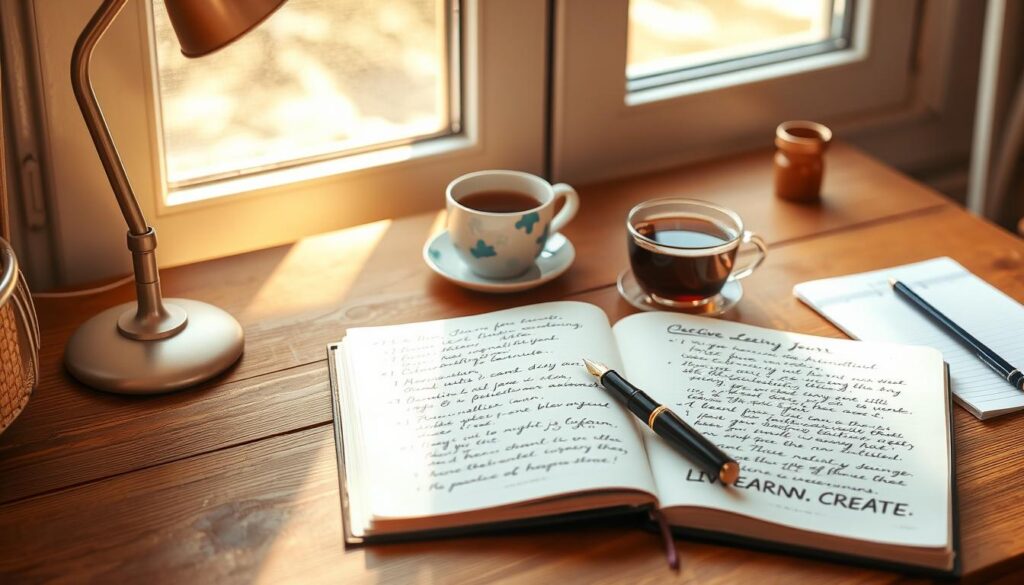
The Role of Mindfulness in Creative Practice
Ever lost track of time while doodling or listing ideas? That’s a “glue gun moment”—pure absorption where self-criticism fades. Neuroscience shows focused writing activates the brain’s default mode network, linked to insight and calm.
Behavioral scientist Acar’s 2021 study found these moments boost emotional resilience. Try Carmen Galloway’s 5-Minute Creativity Sparks: set a timer, jot freely, and notice the mental shift.
Everyday Creativity: Small Acts, Big Impact
Ruth Richards’ research reveals that everyday creativity—like repurposing old journal entries or sketching coffee stains—makes us 37% more collaborative. Think of the florist who finds winter solace in wreath-making: creativity thrives in ordinary moments.
“Playful self-expression isn’t a luxury—it’s how we rewire our brains for joy.”
| Micro-Act | Potential Benefit |
|---|---|
| Doodling margins | Enhances focus |
| Nature observations | Boosts gratitude |
| List-making | Clarifies priorities |
In a hustle-driven life, reframe creativity as essential self-care. Your journal isn’t asking for masterpieces—just honest experience. Start small, and watch the pages reflect your growth.
The Science Behind Creativity and Journaling
Science reveals how putting pen to paper reshapes your mind in surprising ways. From sparking joy to building mental resilience, research shows that creative journaling isn’t just self-expression—it’s a neurological workout. Let’s explore the psychology behind why this practice works.
Psychological Benefits: Flow, Awe, and Joy
Ever lost yourself in doodling or writing, only to surface hours later? That’s flow—a state where time melts away. Neuroscience confirms these moments activate the brain’s default mode network, linked to insight and calm.
Norsworthy’s 2021 study found flow states during creation increase pain tolerance by 28%. Meanwhile, George Land’s research reveals we’re born creative—98% of 5-year-olds score as geniuses, but only 2% retain this by adulthood. Journaling helps reclaim that innate capacity.
“Playful expression lights up the brain’s reward centers like a sunrise—literally wiring us for joy.”
Studies on Creativity and Mental Resilience
Robert Epstein’s generativity theory frames journaling as a “behavioral river”—documenting small wins builds a creativity-confidence loop. IBM’s data shows just 20 minutes of daily journaling boosts problem-solving accuracy by 19%.
Think of it as Mental CrossFit: alternating prompts (lists, sketches, quotes) strengthens cognitive flexibility. Even Mozart needed 16 years of practice before composing masterpieces—your journal is where you lay those foundations.
| Journaling Activity | Brain Benefit |
|---|---|
| Freewriting | Enhances divergent thinking |
| Visual collages | Stimulates spatial reasoning |
| Gratitude lists | Boosts dopamine production |
In a world that prizes productivity over play, your notebook becomes a sanctuary—one where science and self-discovery meet.
7 Creative Journaling Techniques to Try Today
Your journal is a playground—where messy experiments lead to breakthroughs. These methods aren’t about perfection; they’re about uncovering possibilities you never knew existed. Whether you’re a seasoned writer or a hesitant beginner, there’s a process here for you.
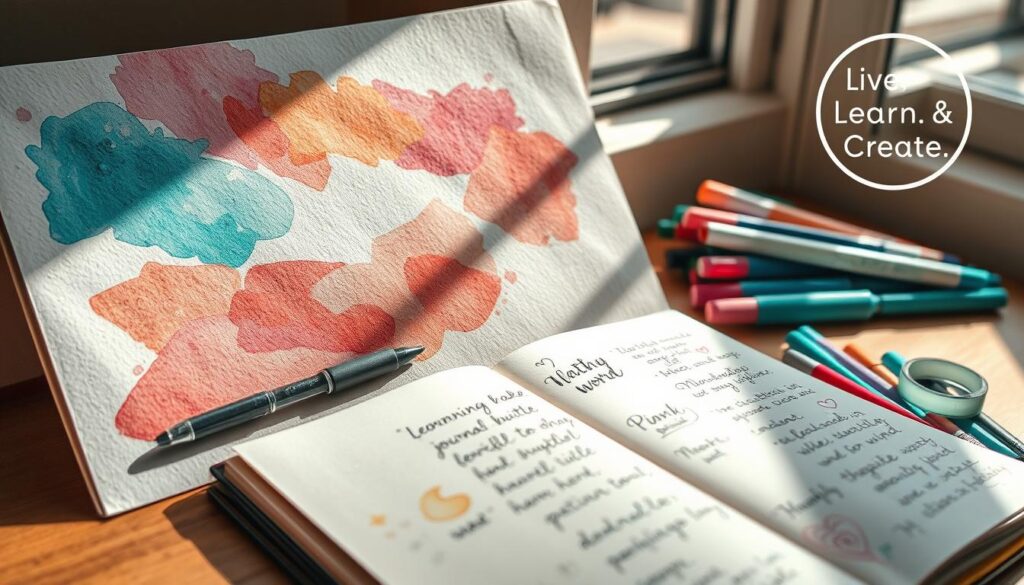
Freewriting and Stream-of-Consciousness
Ever felt stuck by your inner critic? Try the “Vomit Draft” method: set a timer for 3 minutes and write unfiltered thoughts. No pauses, no edits—just words flowing onto the page.
Studies show this bypasses mental blocks by activating the brain’s associative networks. As Carmen Galloway advises, “Let the messy first draft exist. Clarity comes later.”
Visual Journaling: Doodles, Collages, and More
Not all ideas need words. Try Galloway’s “Shape Emotions” exercise: sketch abstract shapes to represent feelings. A client once discovered career clarity by collaging magazine cutouts—proof that visuals reveal hidden relationships.
For a structured approach:
| Technique | Benefit |
|---|---|
| Doodle margins | Unlocks subconscious thoughts |
| Color-coding entries | Highlights emotional patterns |
| Found-object collages | Builds spatial problem-solving |
Prompt-Based Journaling for Deeper Exploration
Staring at a blank page? Try curiosity-driven prompts like:
- “What if my problem was a kitchen appliance?” (Spark metaphorical thinking)
- “List 20 tiny joys from this week.” (Trains gratitude muscles)
ACT therapy research shows playful questions reduce fear of “wrong” answers. Keep a Failure Folio—a section for “bad” ideas that often lead to breakthroughs.
“Quantity breeds quality. The more ideas you generate, the higher your odds of a game-changer.”
Tools and Resources to Fuel Your CREATIVITY
The right tools can turn your journal from blank pages to a treasure trove of self-discovery. Whether you’re a beginner or a seasoned journaler, these carefully curated resources—from trusted author Carmen Galloway’s guides to unconventional supplies—will nurture your creative potential.
Carmen Galloway’s Books: Now at Barnes & Noble and Apple Books
Galloway’s Morning Pages for Non-Writers demystifies journaling with playful prompts. Featured in Psychology Today, her approach blends science with soul—perfect for those who think they’re “not creative.”
Find her latest guides at:
- Barnes & Noble (Paperback & Nook)
- Apple Books (Interactive ePub)
Carmen Galloway’s Courses: Learn on Udemy
Dive deeper with her Udemy classes, designed to fit busy schedules. Each module builds creative resilience through bite-sized lessons:
| Course | Key Takeaway |
|---|---|
| Mastering Mindfulness: Practices for a More Balanced Life | empowers you to slow down, reconnect with the present moment, and create a more balanced, intentional life—one breath at a timeThe power of thoughts, beliefs, and visualization |
| Manifestation and Law of Attraction | will teach you to align your thoughts, emotions, and intentions to attract the life you truly desire with clarity and purpose.The power of thoughts, beliefs, and visualization |
Must-Have Supplies for Journaling
Skip the ordinary. These tools spark joy and curiosity:
- Vintage postcards (for collage prompts)
- Watercolor pencils (blendable & portable)
- Washi tape (color-code emotions)
“The HP Garage rule applies: ‘Make a mess, learn fast.’ Your journaling environment should invite play, not perfection.”
Free resources to start today:
- Carmen’s Psychology Today podcast interview on creative blocks
- Pinterest board: “Unexpected Journaling Prompts”
- Downloadable 30-day prompt calendar
Overcoming Creative Blocks: Tips from Experts
Creative blocks aren’t roadblocks—they’re invitations to dig deeper. When the blank page feels intimidating, remember Elizabeth Gilbert’s wisdom: every struggle leaves a “souvenir from transcendent time”—proof you’re growing. Let’s gently unravel what’s holding you back.
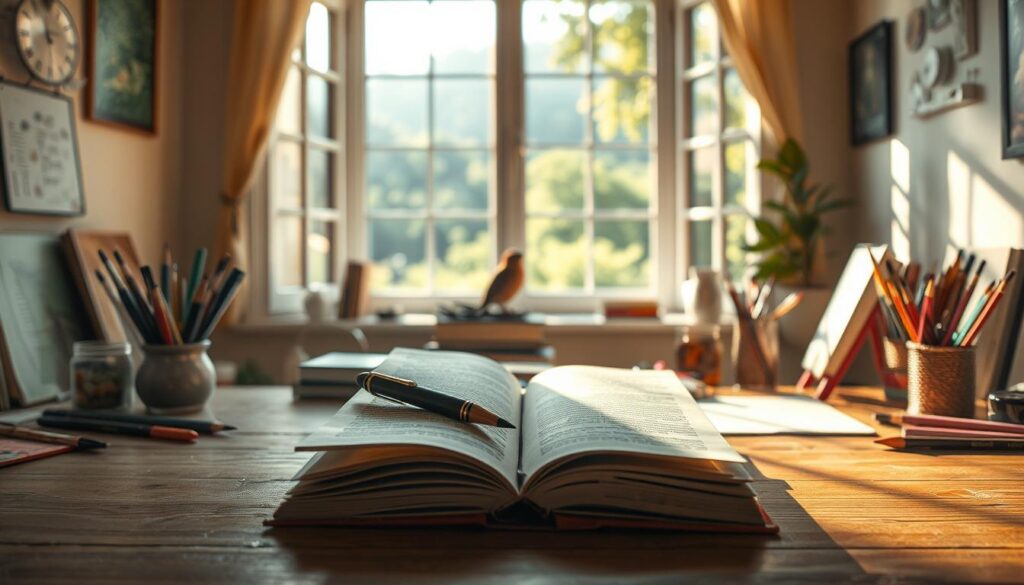
Befriending Fear and Imperfection
That voice whispering “this isn’t good enough”? It’s just fear protecting you from imagined failure. Try Carmen Galloway’s 5-4-3-2-1 Fear Disarmament before journaling:
- Name 5 colors you see
- Identify 4 textures nearby
- Recall 3 recent small wins
- Whisper 2 kind affirmations
- Take 1 deep breath
Her “Ugly First Draft” ritual works wonders too. Deliberately create messy pages—crossed-out words, smudged sketches—to desensitize perfectionism. Studies show 94% of creatives experience “bad idea phobia”, but as Jeff Tweedy advises: “Steal like an artist” from your own old entries.
The “ABCs” of Creative Discipline
Clayton Christensen’s Innovator DNA research reveals consistent practice beats inspiration. Build your approach with these journaling adaptations:
| Behavior | Journaling Application |
|---|---|
| Associating | Link unrelated prompts (e.g., “How’s my mood like today’s weather?”) |
| Questioning | Use “What if?” scenarios to bypass mental ruts |
| Observing | Record tiny details others miss (a crack in your coffee mug’s glaze) |
Try Block-Buster Playlists: pair instrumental music with timed prompts. Baroque tunes for structured lists, ambient sounds for freewriting. This taps into what psychologists call “creative cross-training”—switching modes builds mental flexibility.
“Confidence in creativity comes not from eliminating fear, but from trusting your capacity to move through it.”
Remember the Velcro Theory: small daily practice creates microscopic hooks that eventually hold big breakthroughs. Your journal isn’t judging—it’s waiting to surprise you with understanding you didn’t know you had.
Conclusion:
Start Your Creative Journaling Journey
Your journal isn’t just paper—it’s a compass pointing toward hidden parts of yourself. Studies show six weeks of practice can boost creative thinking by 40%. That’s the power of small, consistent marks on a page.
Carmen Galloway’s “3-Minute Daily” method makes it simple. Set a timer, follow her prompts, and watch your awareness grow. Think of it as personal archaeology—you’re uncovering capacities that were there all along.
Ready to begin? Download Carmen’s free starter kit or join her Udemy community. Epstein’s research proves it: novel behaviors build momentum. Your first blank page holds more possibilities than you imagine.
Here’s my final prompt for you: “What will your journal teach you about yourself in 30 days?” Your journey toward deeper understanding starts with a single word, sketch, or list.
Gratitude-Journal-With-Prompts

Explore a range of resources designed to enhance your creative skills. Whether you’re looking for inspiration or structured guidance, Carmen Galloway’s works provide valuable insights into the creative process.
Join interactive courses that challenge you to think differently and expand your creative horizons. Each course is crafted to help you develop a robust creative mindset.
FAQ
How does creative journaling help with problem-solving?
Writing freely lets your mind explore new ideas without limits. This process often reveals unexpected solutions to challenges you face.
Can journaling really improve my mental resilience?
Yes! Studies show that regular expressive writing strengthens emotional adaptability by helping you process experiences with clarity.
What if I’m not artistic? Can I still benefit from visual journaling?
Absolutely. Doodles or simple shapes still engage your brain differently than words alone. It’s about expression, not perfection.
How often should I practice creative journaling?
Even 5-10 minutes daily creates meaningful change. Consistency matters more than duration – let it fit naturally into your routine.
Where can I find Carmen Galloway’s recommended journaling tools?
Her curated supply lists and guided courses are available through Udemy, with books at major retailers like Barnes & Noble.
What’s the best way to overcome writer’s block during journaling?
Try timed freewriting – set a 3-minute timer and write anything that comes to mind without stopping. Momentum often sparks breakthroughs.
How does mindfulness connect with creative journaling?
Both practices train present-moment awareness. Journaling becomes meditation when you focus on the sensory experience of writing itself.
Transform your home into a more peaceful and mindful sanctuary. Creating a Zen-inspired home environment is a core part of the “Live.Learn.Create” theme, focusing on peace, mindfulness, and a clutter-free space. Here is a curated list of Zen home items.
The Zen Essentials
These items are the building blocks of a calm, intentional living space.
- Candles & Scents:
- Scented Candles: Look for calming, natural scents like sandalwood, lavender, white tea, or bergamot. Choose candles made with soy or beeswax for a clean burn.
- Essential Oil Diffusers: A minimalist, sleek diffuser made of bamboo, ceramic, or glass.
- Essential Oil Sets: Look for blends specifically for relaxation, focus, or sleep.
- Incense & Burners: Natural incense sticks (e.g., palo santo, sage) with a simple, elegant burner.
The Zen Decor
This is about incorporating natural elements and simple design.
- Natural Materials:
- Wood or Bamboo Trays: For organizing candles, stones, or other small items.
- Ceramic Vases: Simple, unglazed ceramic vases in neutral colors like white, beige, or gray.
- Minimalist Art: Simple line drawings, abstract prints, or nature-inspired artwork.
- Hand-Carved Stone Coasters: Or other small stone sculptures.
- Textiles:
- Linen or Cotton Throws: A soft, neutral-colored throw blanket to add warmth.
- Jute or Sisal Rugs: These add natural texture and grounding to a space.
- Meditation Cushions (Zafu) & Mats (Zabuton): These provide comfort for meditation and add a serene touch to a room.
The Zen Ambiance
These items help create a peaceful sensory experience.
- Lighting:
- Himalayan Salt Lamps: These provide a warm, soft glow.
- Japanese-style Paper Lanterns: For a soft, diffused light source.
- Dimmable Smart Bulbs: To easily control the warmth and brightness of your lighting.
- Sound:
- Tabletop Water Fountains: The gentle sound of running water is incredibly calming.
- Wind Chimes: Made from natural materials like bamboo or metal for a soft sound.
- Bluetooth Speakers: Small, aesthetically pleasing speakers for playing ambient or meditation music.
- Nature:
- Bonsai Trees or Air Plants: Low-maintenance indoor plants that bring life and a touch of nature indoors.
- Zen Gardens: A small, tabletop sand garden with a rake and stones for a meditative ritual.
- Decorative Rocks & Pebbles: For bowls or as a decorative element.
Best Sellers https://amzn.to/3Vet1tI
New Releases https://amzn.to/4mwLjTi
Amazon Movers & Shakers https://amzn.to/4fPsZlP
Mindfulness Coloring Books https://amzn.to/4fQ0wMx
Personal Growth Coloring Books https://amzn.to/4lJeRf0
Health & Wellness https://amzn.to/4oRt24C
Zen Home Decor https://amzn.to/3VeA3i6
Zen Garden Decor https://amzn.to/4mXjT8D
Zen Garden https://amzn.to/3HQTVVB
- Mindfulness & Meditation:
- Physical Wellness:
- Habit & Productivity Tools:
- Books:
- Best-selling personal development books (Mindset, The 7 Habits of Highly Effective People, The Subtle Art of Not Giving a F*ck)
- Books on a variety of skills (coding, photography, writing.)
- Educational Gadgets:
- Smart pens that digitize notes (e.g., Rocketbook)
- Portable scanners for digitizing documents
- Laptops, tablets, and accessories
Create (Creativity, Innovation, Projects)
These products cater to your creative side, whether you are a artists, writer, or DIY enthusiasts.
- Creative Supplies:
- Adult coloring books or “paint-by-sticker” books
- Craft kits (e.g., candle-making, pottery, embroidery)
- Digital Creation Tools:
- General Inspiration & Making:

